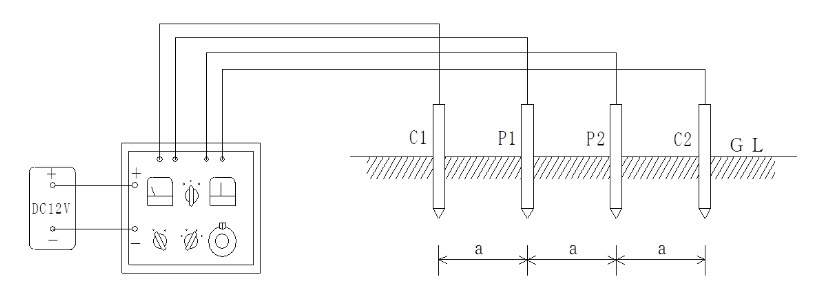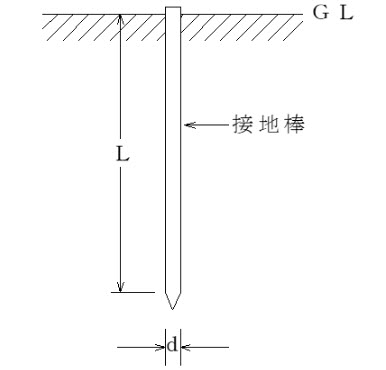Earth resistivity measurement method
There are several methods for measuring the earth resistivity, and of these, we will introduce the representative "Wenner's four-electrode method" and "simple measurement method using a rod electrode".
Wenner's four-electrode method
Wenner's four-electrode method is the most widely used method for measuring earth resistivity.
As shown in Fig. 2, four electrodes are driven in a straight line at equal intervals, and an alternating current is applied between electrodes C1-C2. At that time, measure the potential difference generated between P1 and P2. The resistance value can be obtained by dividing the measured value of this potential difference by the current flowing at that time.

Figure 2 Wenner's four-electrode method
If the electrode spacing is , then the earth resistivity ρ can be calculated by the following formula
ρ=2πaR
ρ: Earth resistivity [Ω·m], π : Constant ,a : Electrode spacing [m], R : Measured value [Ω]
By widening the electrode spacing , the current I shunts deeper into the soil, and the earth resistivity can be measured up to the depth of a [m]. For this reason, it is desirable that the Wenner four-electrode method be used in an environment where a long linear distance can be maintained.
Simple measurement method using a rod electrode
This is a method to measure only the ground surface resistivity.
One rod electrode (ground rod) is driven into the ground, and the earth resistivity is calculated from the ground resistance value of the rod electrode and the length and diameter of the rod electrode.

It can be calculated by the following formula.
Rod electrode formula

This method is used when the straight distance cannot be long because the site where the grounding work is planned is small. However, since this method can measure only the earth resistivity of only the surface layer of soil, Wenner's four-electrode method is used to grasp the earth resistivity in detail.
